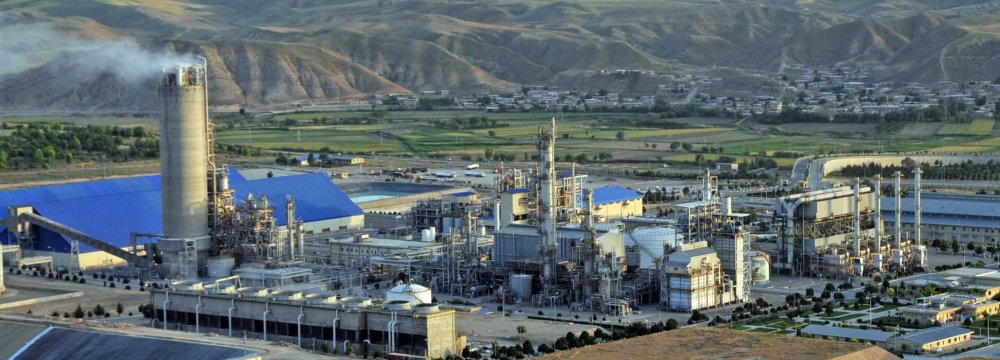
ICCIM Highlights Petrochem Export Potential

“As Iranian petrochemicals have foreign customers, the country can improve foreign currency revenues by completing the value chain,” Seyyed Hossein Salimi was also quoted as saying by NIPNA.
Tehran’s foreign exchange market recently heated up, as the rial weakened against the dollar. The greenback is being traded at 48,000 rials.
"As the downstream sector of the petrochemical industry has higher potential to create jobs than the upstream, the administration should focus on complementary industries to raise the employment rate," he said.
“Improving the business climate, participation of foreign banks in Iranian projects, healthy bank rating and attraction of foreign finance and state-of-the-art technologies are some of the main factors that can boost domestic production.”
Petrochemicals accounted for 34.7% of Iran’s non-oil exports in the last fiscal year (ended March 2017). The industry has achieved continuous growth in the past five years, such that petrochemical complexes have increased to 53 plants from 43, installed capacity has reached 64.9 million tons per annum from 59.8 million tons and production has hit 44 million tons from 41.3 million tons per year.
No Immediate Employment Plans
Salimi pointed out that there are no immediate plans to create jobs, adding that by making investments in a wide range of industries, including petrochemicals, and raising production, Iran can create sustainable employment.
“Paperwork is another impediment to investment, production and improvement of business climate, which should be reduced to increase the pace of making decisions,” he said.
Most Iranian petrochemical infrastructures are in southern regions close to the Persian Gulf where water supply is less of a concern and proximity to international waters makes shipment more cost-effective. Iran holds some of the world's largest crude oil and natural gas reserves, but its petrochemical industry is comparatively underdeveloped.
Tehran says its new petrochemical ventures require over $70 billion in investments that should mostly come from foreign sources. Rasoul Afsharzadeh, an official of Persian Gulf Petrochemical Industries Company, said earlier this month 10 petrochemical projects worth about $9 billion are being developed by the company, which have made 10-90% physical progress. National Petrochemical Company aims to expand Iran's petrochemical production map under a plan covering new investment areas from West Azarbaijan Province to central and southern regions across the Persian Gulf coast.


Trump weighs using $2 billion in CHIPS Act funding for critical minerals

Codelco cuts 2025 copper forecast after El Teniente mine collapse

Electra converts debt, launches $30M raise to jumpstart stalled cobalt refinery

Barrick’s Reko Diq in line for $410M ADB backing

Abcourt readies Sleeping Giant mill to pour first gold since 2014

Nevada army depot to serve as base for first US strategic minerals stockpile

SQM boosts lithium supply plans as prices flick higher

Viridis unveils 200Mt initial reserve for Brazil rare earth project

Tailings could meet much of US critical mineral demand – study

Kyrgyzstan kicks off underground gold mining at Kumtor

Kyrgyzstan kicks off underground gold mining at Kumtor

KoBold Metals granted lithium exploration rights in Congo

Freeport Indonesia to wrap up Gresik plant repairs by early September

Energy Fuels soars on Vulcan Elements partnership

Northern Dynasty sticks to proposal in battle to lift Pebble mine veto

Giustra-backed mining firm teams up with informal miners in Colombia

Critical Metals signs agreement to supply rare earth to US government-funded facility

China extends rare earth controls to imported material

Galan Lithium proceeds with $13M financing for Argentina project

Kyrgyzstan kicks off underground gold mining at Kumtor

Freeport Indonesia to wrap up Gresik plant repairs by early September

Energy Fuels soars on Vulcan Elements partnership

Northern Dynasty sticks to proposal in battle to lift Pebble mine veto

Giustra-backed mining firm teams up with informal miners in Colombia

Critical Metals signs agreement to supply rare earth to US government-funded facility

China extends rare earth controls to imported material

Galan Lithium proceeds with $13M financing for Argentina project

Silver price touches $39 as market weighs rate cut outlook

















